In this article, we will highlight why creativity is crucial for our society, how to nurture it in children, and how to reclaim it within ourselves. It's a must-read for parents, teachers, creatives, and even more so for those who believe they aren't creative.
Here's a piece of great news: there's no such thing as a non-creative individual. We all harbor creative potential within us, and it's impossible to lose it.
Several misconceptions about creativity have been perpetuated: the notion that one must be a genius to be genuinely creative, that creativity is inborn, that inspiration strikes some while eluding others, and that the timing of such inspiration is unpredictable. Fortunately, these beliefs are unfounded. In reality, creativity can be deliberately nurtured and developed, akin to exercising a muscle. This is due to the brain's plasticity, allowing it to continually evolve as we learn and practice new skills. Hence, it can adapt towards fostering creativity.
Parents who demonstrate creativity in their thoughts and actions encourage their children to be creative. Therefore, we will explore creativity from all angles and provide numerous tips to develop not just your children's creativity, but also your own.
What is creativity?
Defining it is no simple task, given the plethora of interpretations. A creative idea must be original and, equally importantly, useful. The reasons behind this will be discussed later.
Creativity involves transcending conventional, predefined schemas. For many adults, this poses a challenge because we've grown accustomed to established ways of thinking and functioning. Embracing new thought processes means venturing off the beaten path and taking risks—an uncertainty many prefer to avoid.
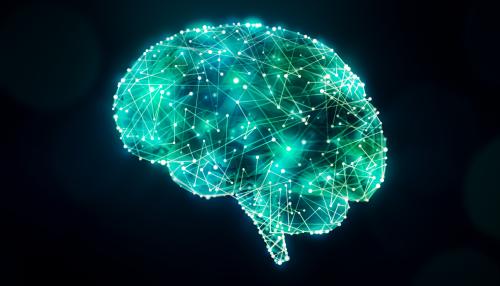
In the realm of creativity, pre-existing knowledge is reconnected in novel ways. Old ideas are reconfigured. Through an unconscious process, we combine elements from diverse fields to create something new. Some combinations prove more sensible and promising than others. Since these processes occur during free association, they cannot be planned, controlled, or bound by a predetermined scheme. This process begins with a sense of unknowing: we ponder about how something could work. We do not operate in a vacuum but build upon previous knowledge. Therefore, it is essential to amass as much varied knowledge as possible and apply it to different scenarios. We simultaneously reflect on the past and envision the future.
Creativity is also the capacity to adapt to a changing world, to devise solutions to emerging problems and conflicts, and to manage stressful situations.
Everyday creativity
When we envision creativity, we often think of distinguished artists whose works have stood the test of time or innovative entrepreneurs: Beethoven, Van Gogh, or Steve Jobs, for instance. But creativity isn't confined to such monumental achievements. Everyday creativity—termed 'mini-c creativity' as opposed to 'big-C creativity'—also has significant value. A parent substituting ingredients in a recipe, or using an alternative cooking method, can be creative. A mother repurposing a cupboard handle to hang a wooden spoon is being creative. Even a baby reaching for a distant rattle with a longer object exhibits creativity. This type of creativity, fostered by the interaction of intelligence and imagination, plays a vital role in schools and daycare centers.

These everyday creative achievements fall under the term mini-c creativity (as opposed to big-c creativity). They arise in the interaction of intelligence and imagination. It is this type of creativity that plays an important role in schools and daycare centers.
American educationist and creativity researcher Mel Rhodes was the first to systematize the various definitions of creativity in the 1950s and 1960s. He identified four universally valid components: person, product, process, and press. The creative person is curious, observant, and inquisitive. The product of the creative process may only be recognized as valuable by society posthumously. Many artists lived modestly; their works gained fame only after their deaths—Vincent Van Gogh serves as an example. Rhodes esteemed creative ideas or theories more highly than individual creative products, as these ideas can inspire the development of numerous new and valuable products. By "press," Rhodes refers to a person's environment, which leaves an indelible impression, influences them, and prompts innovative solutions.
When is something creative?
Identifying when something is creative is tricky, it is even a philosophical question. A product or action isn't inherently creative—it's deemed creative when others perceive it as such. Consequently, discrepancies often arise between self-perception and external perception in this domain.
There isn't a specific region in the brain where creativity originates. Instead, various areas collaboratively facilitate it—some manage language, others spatial thinking or visual memories, knowledge in a specific field, and so forth. In the creative process, the left and right brain hemispheres work in unison. This explains why left-handed individuals are often more creative, as they typically have equally developed cerebral hemispheres, maximizing brain efficiency.
As the body, so the mind
Wojciech Eichelberger, a psychologist and psychotherapist, adopts a holistic approach to the creative process, asserting that not only the mind and intellect contribute, but also our emotions and body. The more new movements we execute and retain, the more powerful our brain becomes in tackling intellectual questions. Our creative capabilities depend on the number of movement processors our brain possesses. Hence, the growing trend to integrate thinking with movement, whether in active walking meetings at the workplace or large-scale nationwide movement projects (see the articles "Couch Potatoes – Why a Lack of Exercise Is Even Worse for Children than for Adults" and "1 + 1 + 3 = QUADRO"). It starts small: even gesticulation aids our thinking process.
Much like enduring athletic activities such as jogging, the flow state of the creative process emerges when we engross ourselves in a task for an extended period.

Today, we still recognize four stages in creative problem-solving, as initially proposed by British social psychologist and educationalist Graham Wallas in the 1920s:
- Preparation
- Incubation
- Illumination
- Verification
In the initial stage, you familiarize yourself with the problem by accumulating information or mentally attuning to it. The second stage involves taking a mental break, engaging in other activities, or relaxing, while the brain continues to process and unconsciously link information. This step is paramount in the creative process. Eventually, the moment of enlightenment, the "Eureka!" moment, strikes. Subsequently, the individual evaluates the viability of the solution, refines it, and implements it.
Divergent versus Convergent Thinking
In discussions surrounding creativity, the term "divergent thinking" frequently arises. Often at the forefront of creativity studies, divergent thinking involves reconfiguring existing knowledge, questioning convention, and sparking not only new, but better ideas. However, it's just one piece of the puzzle.
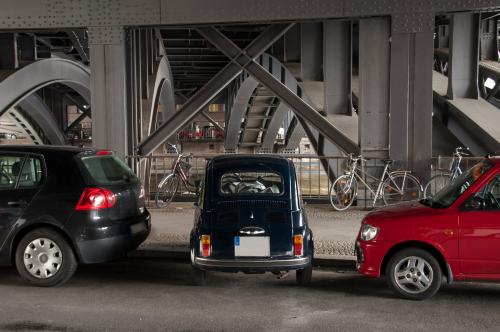
Its counterpart, convergent thinking, is often overlooked, yet it is equally crucial. It pertains to the fourth stage of the creative process (with divergent thinking predominantly in the second phase). In convergent thinking, or logical-analytical thinking, ideas are scrutinized for their practicality and utility. Essentially, these ideas must hold up in real-world applications.
Creativity: More Than Finger Painting
German neuroscientist and psychiatrist Manfred Spitzer argues that creativity isn't merely about randomly splattering paint. Knowledge is a prerequisite for creativity; without it, there are no foundations for generating ideas. This reinforces the importance of the first step in the creative process: gathering information. Consequently, existing knowledge is indispensable for future action, enabling us to construct new connections. Therefore, we should amass and practice knowledge throughout our lives to engender true creativity. The ten-year rule supports this: it suggests that on average, researchers, artists, and other creatives invest ten years into a topic before they make a significant breakthrough.
However, knowledge can sometimes stifle creative performance. Knowing too much might lead you down well-trodden paths, as existing knowledge can bias your thought processes.
From Reader to Writer
Though knowledge and intelligence lay the groundwork for creativity, they alone are insufficient. Simply reading novels or appreciating art doesn't automatically translate into writing a great book or creating a masterpiece. However, engaging with others' works can inspire you to explore the field yourself.
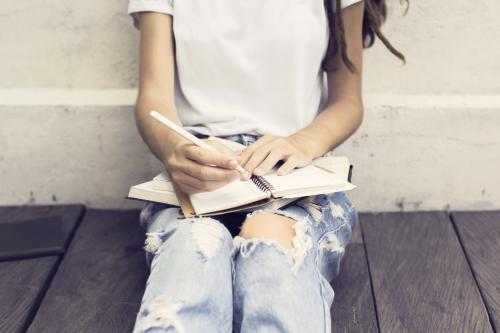
An intriguing question regarding creativity is whether talent in one area, say painting or writing, implies creativity in other fields. Can an individual possess a universal form of creativity spanning different domains? While possible in isolated cases, it's typically observed that creativity is domain-specific and should be fostered accordingly.
Solo or Team Creativity?
Is creativity a solitary endeavor, or are the best ideas generated through collective brainstorming? The answer is controversial. Figures such as Johann Wolfgang von Goethe, Leonardo da Vinci, and Galileo Galilei achieved greatness without collaborating. Creativity researcher Tanja Gabriele Baudson, German-Dutch science journalist Bas Kast, and assistant professor Julia Sophie Haager all emphasize the importance of creative solitude. They suggest that one should brainstorm individually before discussing ideas within a group, as this method often yields superior results.
On the flip side, new ideas often build upon existing ones, making collaboration beneficial. Austin Kleon, in his book "Steal Like an Artist," argues that nothing is truly original—it's always a blend of what has come before. Therefore, brainstorming with individuals from different fields can contribute varied perspectives and approaches to problem-solving. However, during group sessions, more assertive participants might dominate the discussion, leaving those less confident (yet potentially full of good ideas) without an opportunity to contribute. Hence, promoting active sharing in team meetings is crucial to nurturing creative potential.
When is a group most successful?
Bas Kast cites a study stating that empathetic individuals make a group smarter, as they can identify when someone is about to present an insightful idea. Women often excel in this role.
Entrepreneur and author Cyril de Sousa Cardoso, in his TEDx Talk, observes that people tend to guard their ideas from others. However, he stresses that creativity flourishes when ideas are shared and stimulate one another. Moreover, he laments the notion that ideas should only come from certain individuals, often those who have worked hard or were born into a certain position.
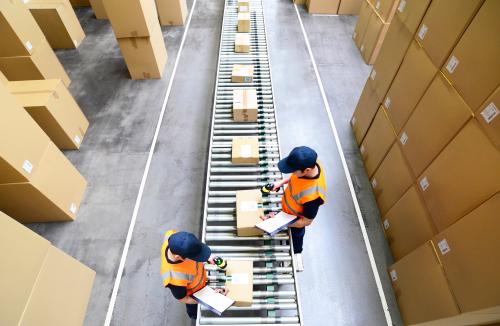
Creativity in the corporate world can be challenging. While creative employees are in demand across all fields, they often face difficulties. Creatives are typically non-conformists, which can clash with hierarchical structures. Entry-level positions, where creativity is typically not encouraged, are usually the starting points for most careers. At the top, where decision-makers reside, creativity is often highly valued. However, many creative individuals get filtered out at the entry level and never ascend.
That said, business and creativity aren't mutually exclusive. Company founders, who undertake novel ventures, are invariably creative. They prove that business and creativity can, indeed, thrive together.
The Creative Personality
What distinguishes a creative individual? Beyond expertise in a specific field, a creative person typically exhibits intense intrinsic motivation and ambition surpassing that of the average individual. Furthermore, they exhibit a capacity for divergent thinking. Rarely adhering to conventional thought patterns, creative individuals often pursue unorthodox ideas. Such pursuits require a robust will and self-assurance, as they tend to position these individuals on the societal fringe, not at its core. Artists often experience this marginalization, undertaking risks to pioneer new concepts, often grappling to make a living from their creativity, despite their exceptional abilities.
Creative individuals approach the world with open-mindedness and express a keen interest in novel ideas. University of Toronto psychology professor Jordan Peterson goes so far as to equate creativity with openness. In his interactions with artists, he has seldom encountered any disinterested in ideas. Creative individuals often entertain multiple ideas or potential solutions simultaneously. Peterson argues that creativity and characteristics like diligence, neatness, and organization rarely coexist. This view is echoed by Manfred Spitzer, who posits that precision and creativity cannot cohabit.
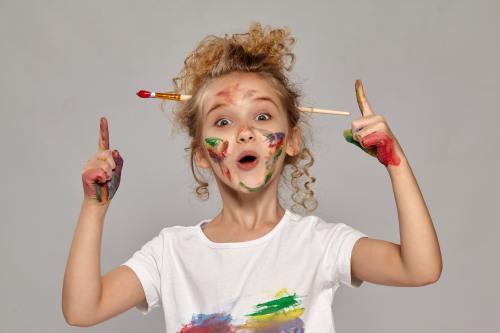
Creative personalities are inherently paradoxical: they fluctuate between bursts of energy and periods of intense concentration; they oscillate between disciplined and playful states; they take pride in their work but remain humble; they value independence yet respect traditions; they display intelligence and childlike curiosity simultaneously. They fluctuate between extroversion and introversion, between femininity and masculinity, between casual experimentation and dedicated labor. They can be passionate and objective, joyful and despondent. Although not all creative individuals display these traits concurrently, each characteristic contributes to their overall creative persona.
Van Gogh and His Ear
It's a common adage that genius and madness are closely entwined. This is particularly evident in figures like Van Gogh or rockstars known for their excessive lifestyles. Does creative genius demand an eccentric, even mad personality, or are creative individuals more prone to mental illness? The jury is still out as definitive studies remain elusive. People with mental disorders certainly perceive the world differently. Julia Sophie Haager suggests that creativity can serve as an outlet for madness. Authors Melina Marseille and Tanja Gabriele Baudson elaborate on this concept, explaining how painting and writing enable expression of unconscious thoughts, aiding in overcoming trauma. Therefore, integrating creative exercises into curricula, especially for young individuals navigating identity formation, can foster emotional processing.
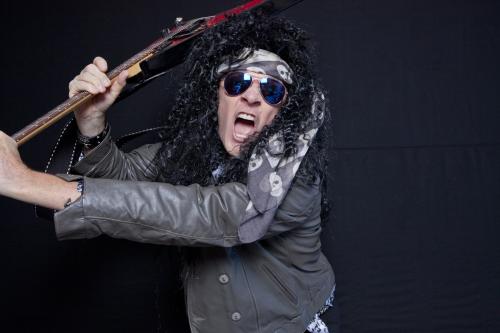
Ingenious Madness
Julia Sophie Haager highlights the importance of the criterion of usefulness when distinguishing between creative, eccentric, or schizophrenic expressions. If this criterion is disregarded, it becomes difficult to distinguish creative utterances from eccentric or schizophrenic ones.
As for the increased emphasis on creativity in contemporary times, the PISA study began assessing creative abilities in 2012. Tanja Gabriele Baudson amusingly observes that admitting to a lack of creativity today would be akin to confessing to using cheap salami from the discount store. But why is creativity so crucial, and why is there such pressure to be creative?
Learning to Learn
The roots of this question can be traced back to the era of industrialization, when functioning factory workers dominated cityscapes and creativity and self-actualization were irrelevant. The echo of this time still influences our school system, where students acquire predetermined knowledge within a specified timeframe to survive in the job market (see the article “Learning Has to Become Awesome” – Of Finger Games and Laptops). While domain knowledge is essential for creativity, indiscriminate absorption of information isn't necessary. This perspective is shared by Ugo Cavenaghi, a school principal in Quebec, who points to the ubiquity of smartphones as knowledge repositories.
In the modern age, where manufacturing predominantly occurs in Asia, creativity has become an invaluable resource. It spurs both technical and social innovations that are indispensable for societal progress. The emphasis in contemporary enterprises is not so much on capital but on the quality of ideas. Creative thinking and innovation are the cornerstones of an economy. This becomes especially crucial as Germany and similar societies face an aging population, where ideas become a vital resource. Recognizing this shift, the OECD has been considering creativity as one of the core elements of our knowledge society since 2000.
Although remnants of industrial-era thinking persist in our education system, a digital revolution is emerging. Robots will take over many standardized jobs, leaving jobs that require problem-solving skills—a crucial competency in our time. This shift necessitates creativity since conventional methods won't suffice. Hence, employers prioritize employees who can solve problems in creative ways.
To prepare for this future, it's essential to encourage children to learn independently from an early age. They will face jobs that we can't even imagine today. Who could have predicted twenty years ago that podcasting would become a source of income, or that social media manager would be a job title? Paul Collard, CEO of the British foundation Creativity, Culture and Education, projects that 60% of future job profiles remain unknown. It's also anticipated that long-term employment with a single company will be replaced by a shift towards job creation.
Regardless, creativity should not be viewed solely as a tool for professional preparation. It is a means of self-expression. Claus Martin, a director and composer who works with children and young people, sees art as a tool for self-discovery. This includes fine arts, performing arts, music, and literature. By engaging with the arts, young people connect with their emotions and build their value systems. It's a holistic approach to education, integrating emotion with rationality to evaluate an artwork. By fostering creativity, we nurture the creative facets of individual personalities.
Continue reading about children as creative geniuses in Part 2.
All sources are provided at the end of Part 4.
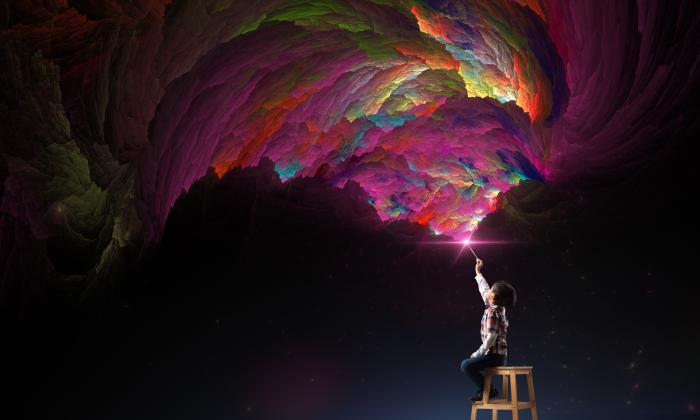
Komentari